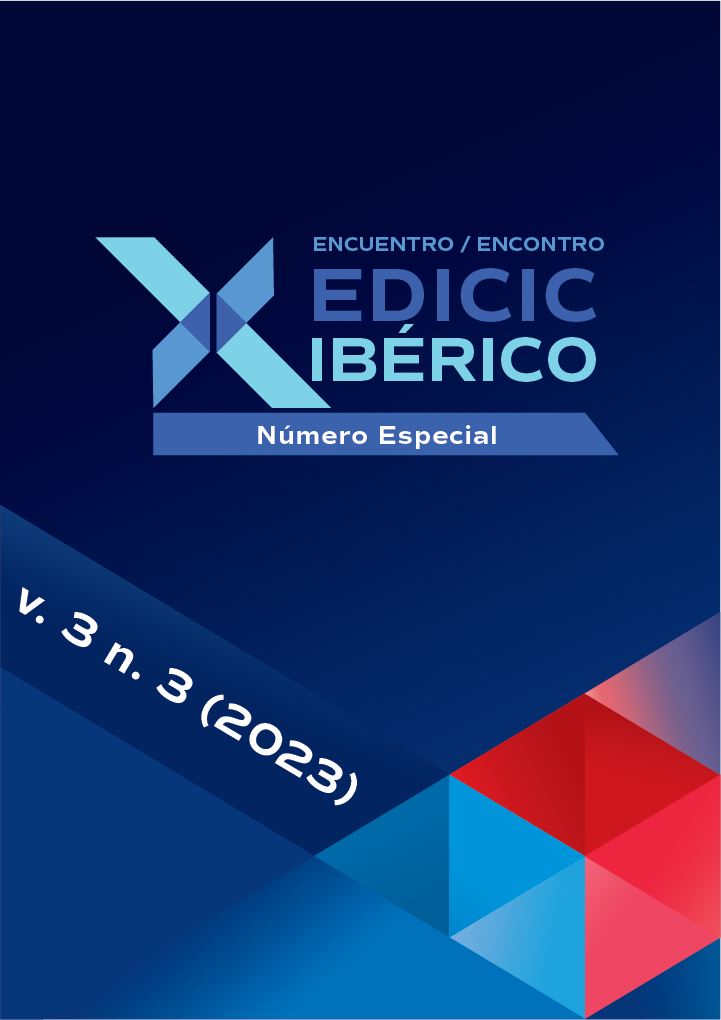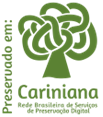Queer Fear: el lugar de la comunidad LGBTI+ en la biblioteca municipal de sintra
DOI:
https://doi.org/10.62758/re.v3i3.199Palabras clave:
Bibliotecas Públicas, LGBTI , Sintra, PortugalResumen
La biblioteca pública tiene el deber de acoger a la comunidad LGBTI+ a través de productos y servicios específicos. Esta investigación parte de las necesidades queer, buscando comprender su articulación con la biblioteca pública y centrándose en la colección existente en la biblioteca y en los servicios que ofrece, lo que puede permitir identificar el nivel de acogida de la comunidad LGBTI+. Para el estudio de caso de la Biblioteca Municipal de Sintra, se desarrollaron herramientas de investigación específicas: un cuadro de observación, que comparaba la realidad deseada con la realidad observada en la biblioteca; una lista de control de libros clásicos queer (1886-2002), organizada para este estudio con el fin de evaluar la colección de la biblioteca; notas de campo reflexivas, como forma de seguimiento del estudio de caso; y un cuadro de recomendaciones, resultado de una amplia reflexión sobre el estado actual de los productos y servicios de la Biblioteca Municipal de Sintra y consistente en un conjunto de medidas derivadas de fuentes de apoyo portuguesas. Dividida fundamentalmente en una evaluación de la colección y de los servicios, la investigación reveló una biblioteca pública con las bases necesarias para convertirse en un espacio inclusivo para la diversidad de género. La falta de conocimiento sobre la comunidad LGBTI+ y sus necesidades de información sigue siendo una realidad, por lo que sólo mediante la colaboración con las organizaciones LGBTI+ nacionales y regionales podrá mejorarse la situación actual. Sin embargo, el respeto a la comunidad LGBTI+ y a sus necesidades por parte de los bibliotecarios de BMS es un aspecto fundamental.
Citas
Acevedo-Polakovich, I. D., Bell, B., Gamache, P., & Christian, A. S. (2013). Service Accessibility for Lesbian, Gay, Bisexual, Transgender, and Questioning Youth. Youth & Society, 45(1), 75–97. https://doi.org/10.1177/0044118X11409067. DOI: https://doi.org/10.1177/0044118X11409067
Alexander, L. B., & Miselis, S. D. (2007). Barriers to GLBTQ collection development and strategies for overcoming them. Counterpoise, 11(3/4), 73.
American Library Association. (2007, maio 29). Access to Library Resources and Services Regardless of Sex, Gender Identity, Gender Expression, or Sexual Orientation: An Interpretation of the Library Bill of Rights [Text]. Advocacy, Legislation & Issues. https://www.ala.org/advocacy/intfreedom/librarybill/interpretations/accesslgbt.
American Library Association. (2016, dezembro 12). Stonewall Book Awards [Text]. Round Tables. https://www.ala.org/rt/rrt/award/stonewall.
American Library Association Rainbow Round Table. (2020). ABERTA A TODAS AS PESSOAS: Servir a Comunidade LGBTI na Sua Biblioteca (A. Macedo, Trad.). https://blx.cm-lisboa.pt/wp-content/uploads/2020/12/aberta-a-todas-aspessoas_brochura_web.pdf
Bain, A. L. (2022). Queer affordances of care in suburban public libraries. Emotion, Space and Society, 45, 100923 DOI: https://doi.org/10.1016/j.emospa.2022.100923
Beiriger, A., & Jackson, R. M. (2007). An Assessment of the Information Needs of Transgender Communities in Portland, Oregon. Public Library Quarterly, 26(1– 2), 45–60. https://doi.org/10.1300/J118v26n01_03. DOI: https://doi.org/10.1300/J118v26n01_03
Birdi, B., & Ford, N. (2018). Towards a new sociological model of fiction reading. Journal of the Association for Information Science and Technology, 69(11), 1291–1303. DOI: https://doi.org/10.1002/asi.24053
Brendler, B., Beckman, L., Adkins, D., Moulaison, H., Wiggins-Prelas, N., & Adams, V. (2017). « Provide the Highest Level of Service»: Public Library Collections of LGBTQ· Materials for Adolescents in the United States. Journal of Research on Libraries and Young Adults, 8(1), 1–32.
Chapman, E. (2013). No More Controversial than a Gardening Display? Provision of LGBT-Related Fiction to Children and Young People in UK Public Libraries. LIBRARY TRENDS, 61(3), 542–568. https://doi.org/10.1353/lib.2013.0010. DOI: https://doi.org/10.1353/lib.2013.0010
Chapman, E., & Birdi, B. (2008). Fiction for all. Public Library Journal, 23(1), 8–11.
Chapman, E. L. (2014). “I’ve never really thought about it”: Librarians’ attitudes to the provision of LGBT-related fiction to children and young people in English public libraries.
Curry, A. (2005). If I ask will they answer? Evaluating public library reference service to gay and lesbian youth. REFERENCE & USER SERVICES QUARTERLY, 45(1), 65–75.
DeWalt, B. R. (2011). Participant Observation: A Guide for Fieldworkers. AltaMira Press.
Denzin N. K. & Lincoln Y. S. (2018). The sage handbook of qualitative research (Fifth). Sage
Goldthorp, J. (2007). Can Scottish public library services claim they are socially inclusive of all minority groups when lesbian fiction is still so inaccessible? JOURNAL OF LIBRARIANSHIP AND INFORMATION SCIENCE, 39(4), 234– 248. https://doi.org/10.1177/0961000607083215. DOI: https://doi.org/10.1177/0961000607083215
Hicks, P., & Kerrigan, P. (2020). An intersectional quantitative content analysis of the LGBTQ plus catalogue in Irish public libraries. JOURNAL OF LIBRARIANSHIP AND INFORMATION SCIENCE, 52(4), 1028–1041. https://doi.org/10.1177/0961000619898212. DOI: https://doi.org/10.1177/0961000619898212
IFLA. (sem data). IFLA Code of Ethics for Librarians and other Information Workers (full version) – IFLA. Obtido 4 de abril de 2022, de https://www.ifla.org/publications/ifla-code-of-ethics-for-librarians-and-otherinformation-workers-full-version/.
ILGA Portugal. (2019). Relatório Anual 2019 Discriminação Contra Pessoas LGBTI+. 57.
Keilty, P. (2007). LGBT and Information Studies: The Library and Archive OUTreach Symposium at UCLA; and In the Footsteps of Barbara Gittings: An 63 Appreciation. InterActions: UCLA Journal of Education and Information Studies, 3(1). https://doi.org/10.5070/D431000592. DOI: https://doi.org/10.5070/D431000592
Lambda Literary. (sem data). Previous Winners. Lambda Literary. Obtido 1 de março de 2022, de https://lambdaliterary.org/awards/previous-winners-3/.
Lundin, A. H. (1989). List-Checking in Collection Development. Collection Management, 11(3–4), 103–112. https://doi.org/10.1300/J105v11n03_06. DOI: https://doi.org/10.1300/J105v11n03_06
Mathiesen, K. (2015). Informational justice: A conceptual framework for social justice in library and information services. Library Trends, 64(2), 198–225. DOI: https://doi.org/10.1353/lib.2015.0044
McEachreon, B. (2016). Libraries «coming out» in support of LGBTQIA+ human rights and social justice. Advances in Librarianship, 41, 183–208. https://doi.org/10.1108/S0065-283020160000041032. DOI: https://doi.org/10.1108/S0065-283020160000041032
Mehra, B., & Braquet, D. (2006). A “queer” manifesto of interventions for libraries to “come out” of the closet! A study of “queer” youth experiences during the coming out process. LIBRES: Library and Information Science Research Electronic Journal, 16(1), 1–29. DOI: https://doi.org/10.32655/LIBRES.2006.1.2
rede ex aequo. (sem data-a). Apoio. Apoio e recursos | rede ex aequo - associação de jovens lgbti e apoiantes. Obtido 7 de abril de 2022, de https://www.rea.pt/apoio/.
Robinson, T. (2016). Overcoming Social Exclusion in Public Library Services to LGBTQ and Gender Variant Youth. PUBLIC LIBRARY QUARTERLY, 35(3), 161–174. https://doi.org/10.1080/01616846.2016.1210439. DOI: https://doi.org/10.1080/01616846.2016.1210439
Schrader, A. M. (2009). Challenging silence, challenging censorship, building resilience: LGBTQ services and collections in public, school and postsecondary libraries
Snapp, S. D., Watson, R. J., Russell, S. T., Diaz, R. M., & Ryan, C. (2015). Social support networks for LGBT young adults: Low cost strategies for positive adjustment. Family Relations, 64(3), 420–430. DOI: https://doi.org/10.1111/fare.12124
Stevens, G. (2018). Curry’s Study on the Quality of Public Library Reference Service to LGBTQ Youth. EVIDENCE BASED LIBRARY AND INFORMATION PRACTICE, 13(1), 57–63. https://doi.org/10.18438/eblip29399. DOI: https://doi.org/10.18438/eblip29399
The Publishing Triangle. (sem data). Best Lesbian and Gay Novels. The Publishing Triangle. Obtido 23 de março de 2022, de https://publishingtriangle.org/bestlesbian-gay-novels/.
Vincent, J. (2015). Why Do We Need to Bother? Public Library Services for LGBTQI People. LIBRARY TRENDS, 64(2), 285–298. https://doi.org/10.1353/lib.2015.0050. DOI: https://doi.org/10.1353/lib.2015.0050
Waite, J. (2013). To what extent do public libraries in the UK provide adequate resources for trans people. Sheffield: University of Sheffield
Wong, P., Figueroa, M., & Cardenas-Dow, M. (2018). Diversity, equity of access, and social justice. Information services today: An introduction, 52–68.
Descargas
Publicado
Cómo citar
Número
Sección
Licencia
Derechos de autor 2023 Revista EDICIC

Esta obra está bajo una licencia internacional Creative Commons Atribución 4.0.
La Asociación posee los derechos de autor de los textos que publica y adopta la licencia Creative Commons, CC BY 4.0 DEED Atribución 4.0 Internacional (https://creativecommons.org/
Usted es libre de:
- Compartir: copiar y redistribuir el material en cualquier medio o formato para cualquier propósito, incluso comercialmente.
- Adaptar: remezclar, transformar y construir a partir del material para cualquier propósito, incluso comercialmente.






